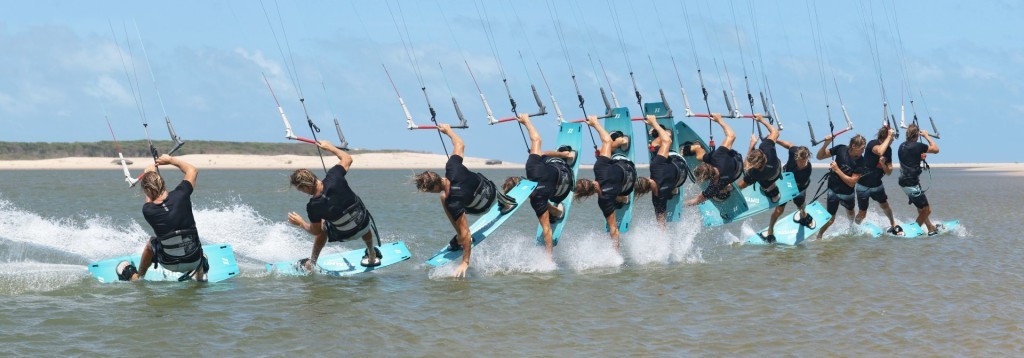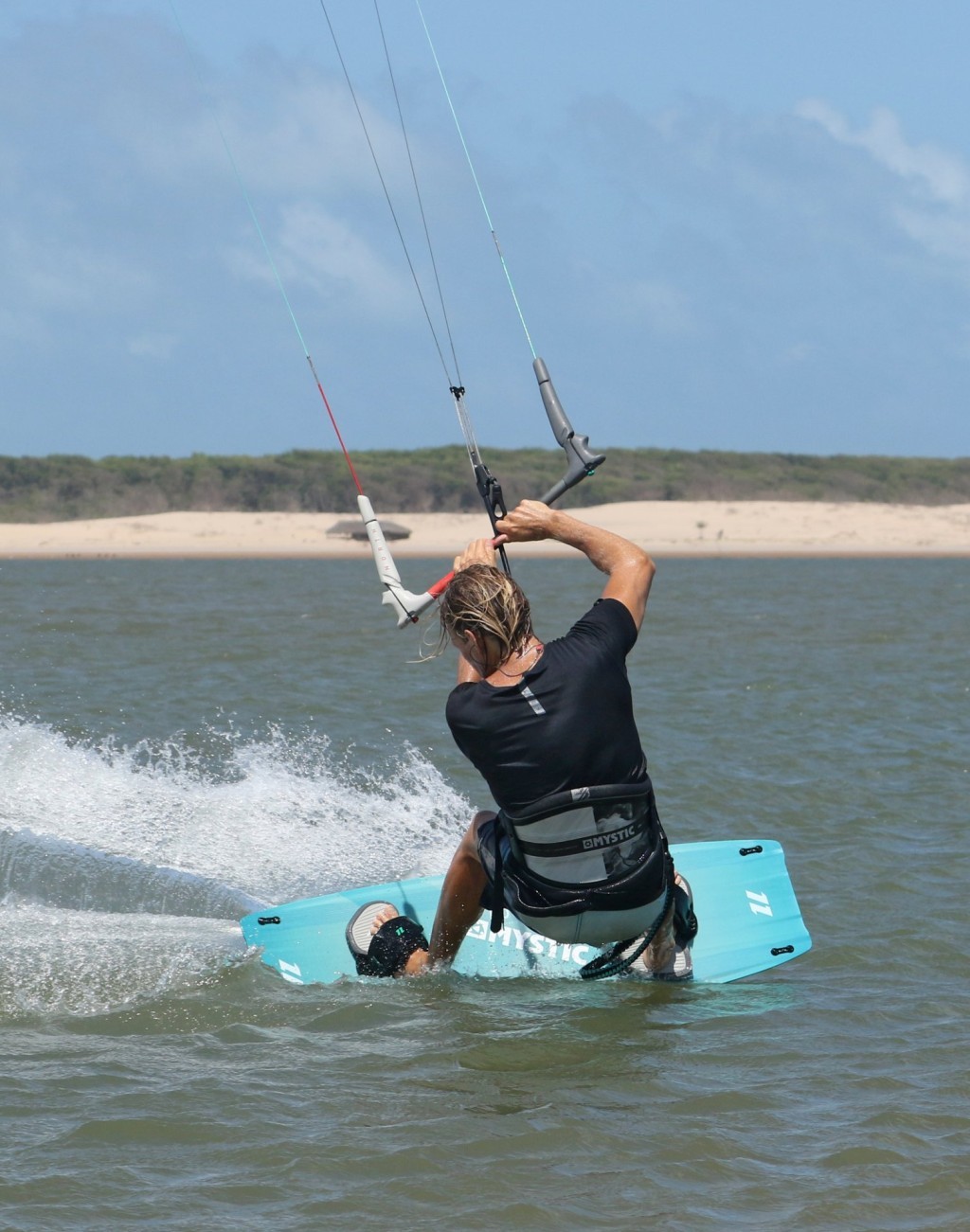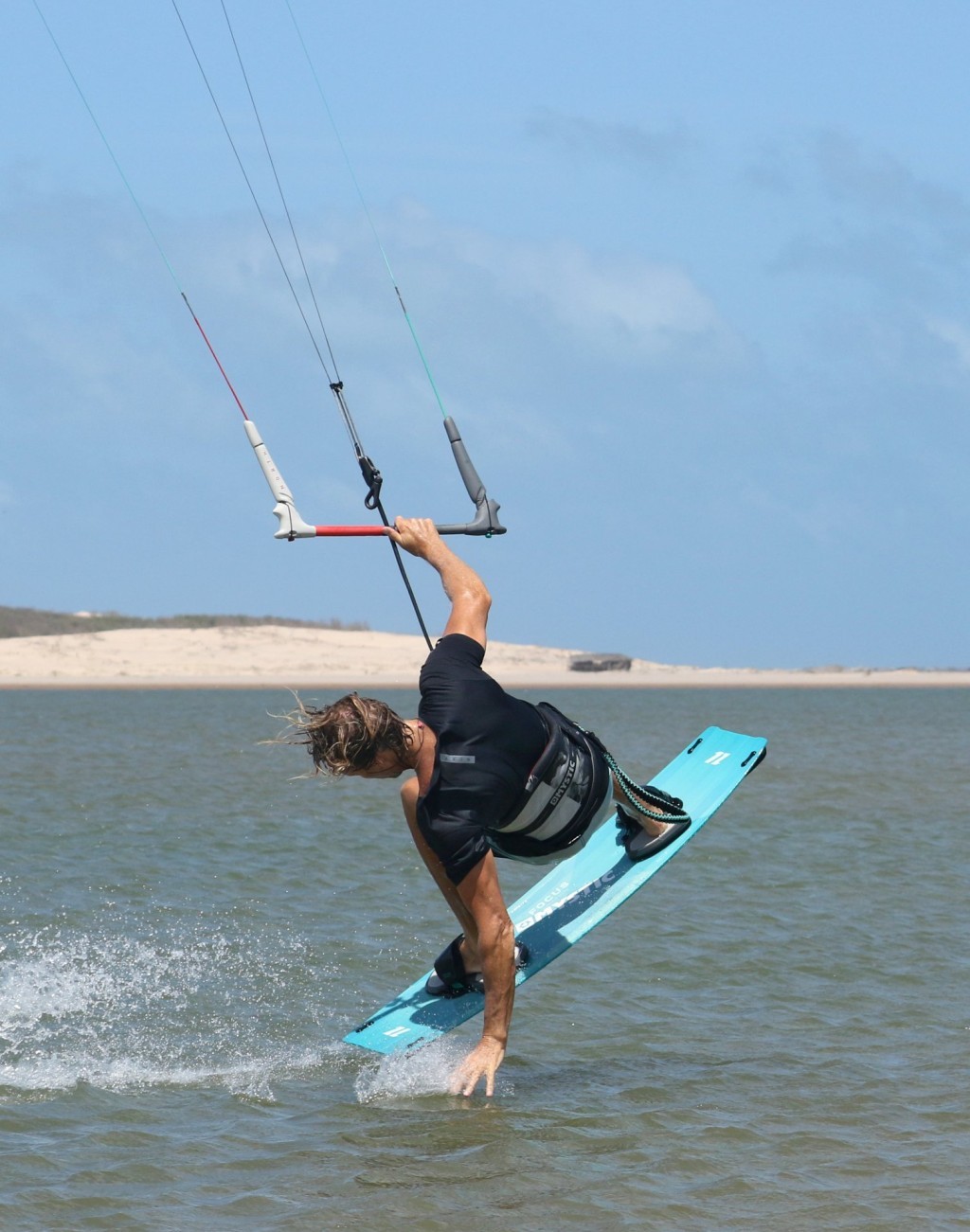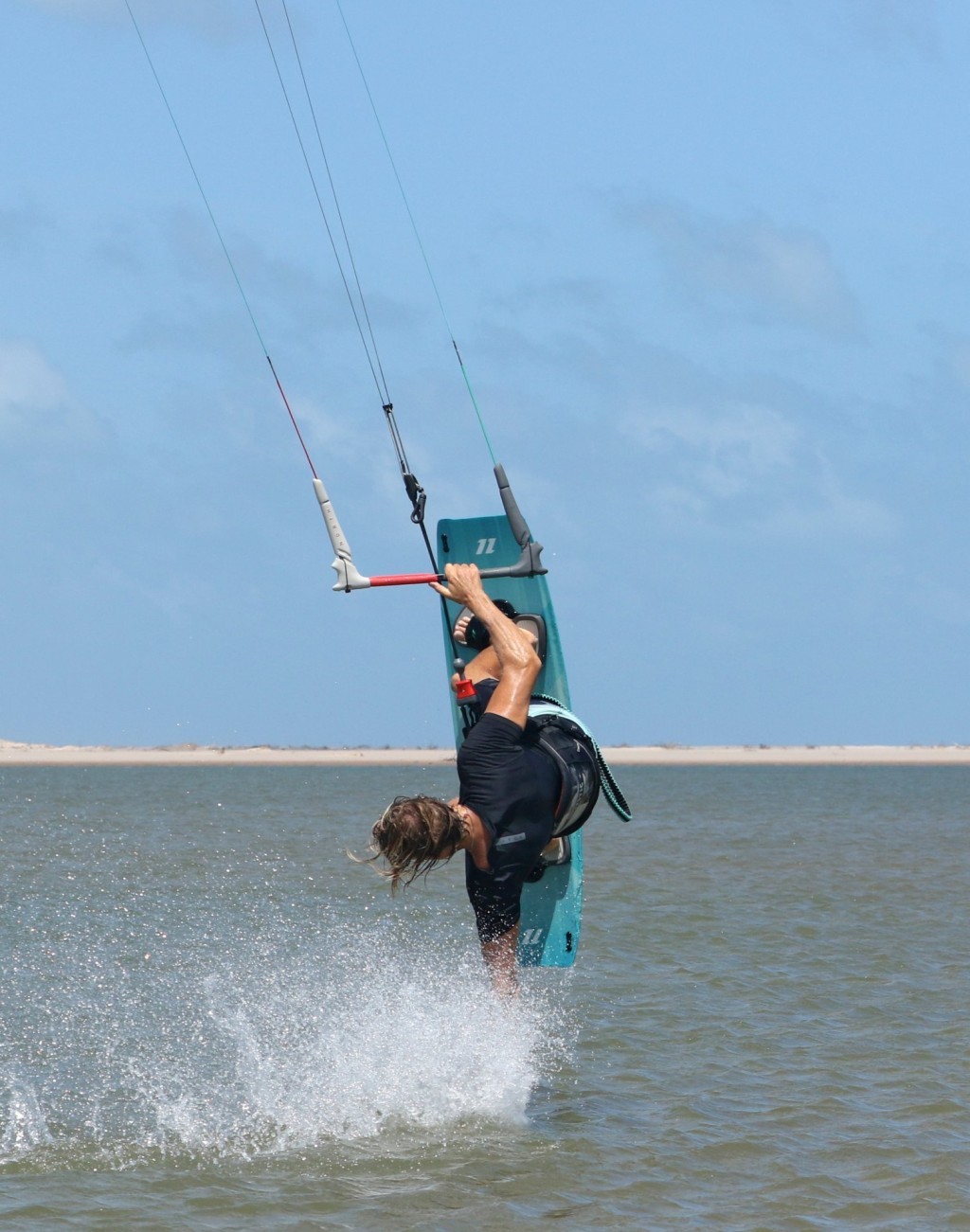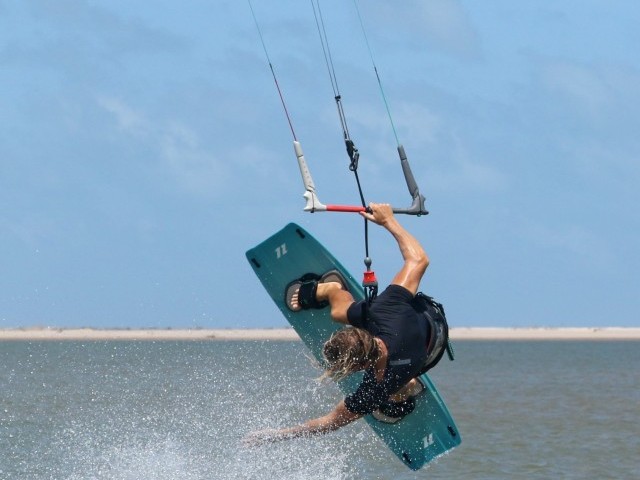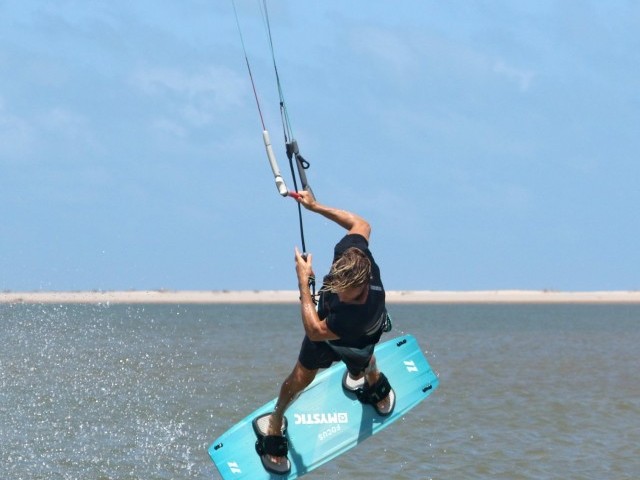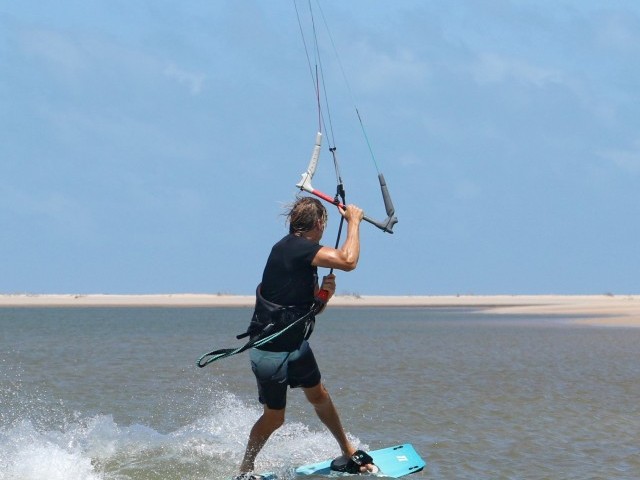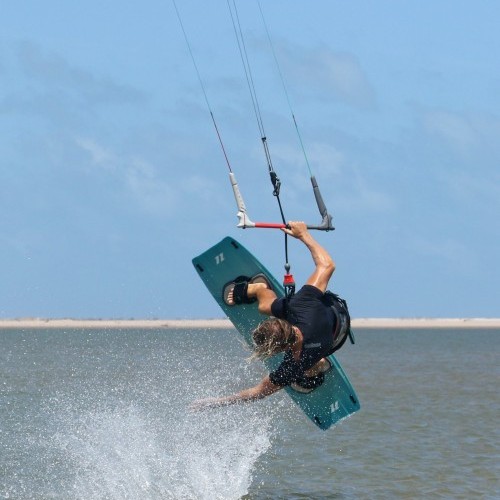
Hand Drag to Blind
Technique / Intermediate
Introduction
We can get quite energetic when discussing the merits of combining skills in kiting. It is at the heart of the sport, both deliberately and mistakenly bodging things together and ending up with something to be pleased with. So here’s another from the Encyclopedia of killer combos. Hand dragging smokes, landing blind rocks, why on earth wouldn’t you! And just to add a flourish of a finale, it warrants a decorous Ole.
It will be considerably easier to learn this by blending the two required skills, hand drag and blind. However, we’ll touch again on the foundations of the hand drag, for those of you who fancy having a crack regardless:)
So, a little recap if we may.
As for all support moves there are two absolute necessaries here, lift in the kite and tension on the lines. Admittedly with tension you’ll have some lift, but trying to learn this in subpar conditions when you’re a tad under will make life unnecessarily hard. Now assuming that you have plenty of beans in the kite, make sure you have a good solid upwind edge to put plenty of tension in your lines. This way you’ll be able to feel the kite and know when it’s time to go. Whilst on your edge with your kite at either 1 or 11 o’clock move your hips back. This will lower your bum and place you nearer to the water. With your posterior close to the drink, you’ll need to break at the waist to keep your bar out on the sweet spot, which you’ll want relatively far away. Hence the need for power.
The Drift Pic A.
The aim is to get the kite back past 12 o’clock so that it will help you lift the board, help lift you and give you time to drag. The amount of lift, and time you have with lift, will depend on how powered you are, kite size and subtlety of kite movements. If you move the kite with enthusiasm, then it’ll lift you as per a jump. If you move it with extra caution, you’ll have no lift. Somewhere in between, a fast drifting action, or a slow send, which gets the kite moving without generating heaps of power is the goal. Whilst drifting the kite back concentrate on keeping your edge. You need to get your body into position to get dragging quickly as you won’t have much time if you intend to go blind. Christian has drifted the kite back, steering with both hands, whilst already looking back and rolling his shoulders back in anticipation of getting the board up quickly.
The Lift Pic B.
You won’t have as much drag time when learning this as you still need some lift to throw the blind. Hence the earlier you get the hand in and dragging, the longer it’ll look! That said there is a fair bit of multitasking going on here. As you feel that the kite is lifting you need to feather the bar out so that it doesn’t lift too much, whilst allowing you to get it behind 12 o’clock. You then need to stop the kite moving, by levelling the bar. You need to lean back and get your hand wet. And you need to pick your board up off the water. Looking at the photo you can see that Christian is leaning massively back towards the tail of the board, his shoulders are parallel with his centre line. This coupled with a controlled amount of lift allows him to dip his hand in super early. He’s got his bar level and he’s quite literally lifting his knees up into his chest to lift the board off the water. Drag already in motion.
Board Up Pic C.
With the kite halted back past 12 o’clock, all you need to do is pull a little on the bar for some support to lift you a touch more. As long as you keep your free hand down near the water, dragging it and washing it to your heart’s content, this will continue to roll your shoulders back further. With your harness hook acting as the fulcrum point, this will rock your board up in front of you. The only tricky bit is that you need to be sensitive to the bar. You need to keep enough power on to hold you up and lift you back, but too much and your caressing hand will be lifted clear off the water, whilst too little and you’ll already be dropping your hips back down and it’s game over. Added to this, you must avoid steering it forwards when looking for support, or else it’ll all be over in a jiffy. Here Christian’s board and shoulders are perpendicular to the water, board pointing skywards, hand happily dragging on an extended arm. It’s worth pondering that the higher you get yourself off the water, the easier it will be to get around to blind, so make sure you’re stretching to keep your hand in. If you’re already have this part in the bag, now is where it gets interesting.
The New Bit - Throwing It Pic D.
Previously it was all about the longest wash possible, maximum efficiency. Now however you need to get yourself turning for the blind before you lose lift, or else you just won’t have room or time. As with pretty much everything in this wonderful life of ours, timing is key. If you’re already a hand dragging master, you’ll have your timing down pat as to when you drop your legs in order to ride away smoothly. Here it needs to be earlier as there’s more to do. If you’re still unsure, think of it thus. As the kite drifts back over 12 o’clock you’ll get a touch more lift before it evaporates like rain drops on hot tarmac. To add insult to injury, landing blind often requires you to sheet the bar out, dumping power that’s already changing state! This means that whilst learning this, going at 12 is as late as you should leave it. There is however some good news too, you can use gravity to help you turn to blind. If we have a look at Christian, he’s scissoring his feet, pushing his high front foot across downwind, whilst lifting his back foot upwind and towards his bum. He’s also using his dragging hand to swim himself around (as you did back when learning to water start). Final piece here, he’s initially pulling on his front hand as well to help with the rotation and keep the kite moving forwards.
Stomping It Pic E.
As the nose of the board drops this should look vaguely familiar to the blind riders amongst you. Landing blind hooked in from an upwind position likes a nose first entry to help the board rotate and pivot that last little bit. As per Christian, keep your head down and your back foot up. You can see that the kite is high. This is both a blessing and a curse. Good news is that it’s still holding Christian up and giving him time. Bad news is that when he lands, he’ll have no more momentum. As at this point, keep the bar in on the sweet spot to drift the kite forwards. This may inhibit you turning as much as you’d like but hopefully the nose will push you around that last bit.
Ole Pic F
Whether you intend to ride out blind, spin it back around, or push through into a cheeky Ole you will need to release tension in the lines for landing. If truth be told the Ole fits well as it’s a reliable solution to any blind landing with a high kite. Landing upright Christian sheets the bar out and pushes it upwind and across in front of him, whilst gently dropping his weight onto his feet to flatten the board. You don’t want to be edging whilst Oleing! Note even though Christian has his bar right out he is already steering the kite down with his front hand. This way as soon as he finishes the Ole, he can pull the bar down onto the sweet spot and the kite will immediately pull him.
Top Tips
One word and that’s early, everything early. From getting you hand in, board up and rotating to blind. Whilst learning, the early bird definitely catches the worm. Once you’ve got the sequence in the bag you can them add on some distance and experiment with throwing the blind later.
It’s very likely that when you start trying this, you’ll struggle to get around enough to blind. The solution is to make sure that you sheet your bar out when you rotate, otherwise the kite will pull you back. Only slight problem is that then you’ll probably have the kite to high to keep moving. Settle for the blind landing to get the movement, and then move onto getting the kite forwards.
Righty ho, time to have a gander at the videos and sequence to see this as a whole!!!
Common Mistakes
The things that will likely fox you are no time, no height, too much height, can’t turn and kite too far back when you think you’ve stomped it. We’ve pretty much covered them above, so concentrate on the early, making sure you’re dragging high and let the bar out once you’ve thrown the blind.
Keystones
- Head and shoulders back on approach
- Drag early & board high
- Throw blind, scissor legs and swim arm by 12 o’clock
- Bar out once turning
- Flatten board, Ole and steer
This technique article was in Issue 81 of IKSURFMAG.
Related
By Christian and Karine
Christian and Karine have been working together as a coaching team, running improver to advanced kitesurfing clinics since 2003.






